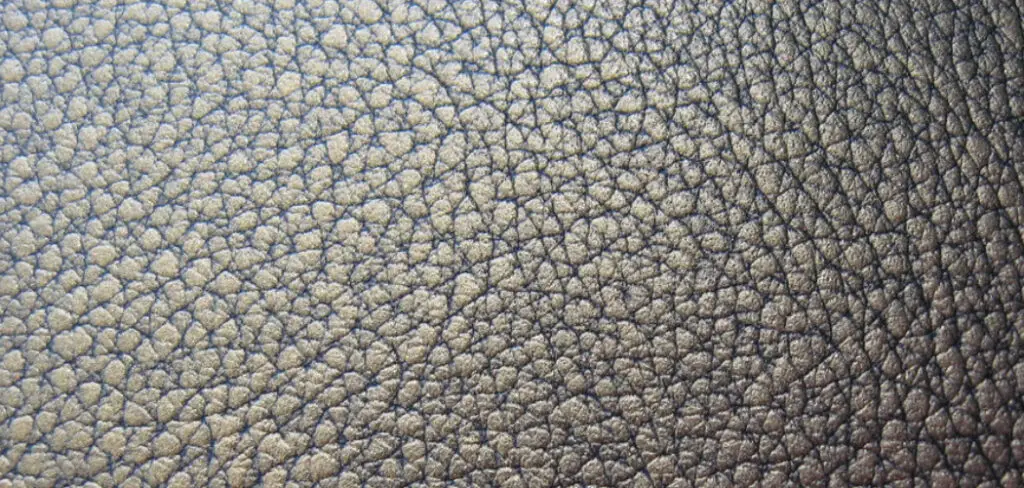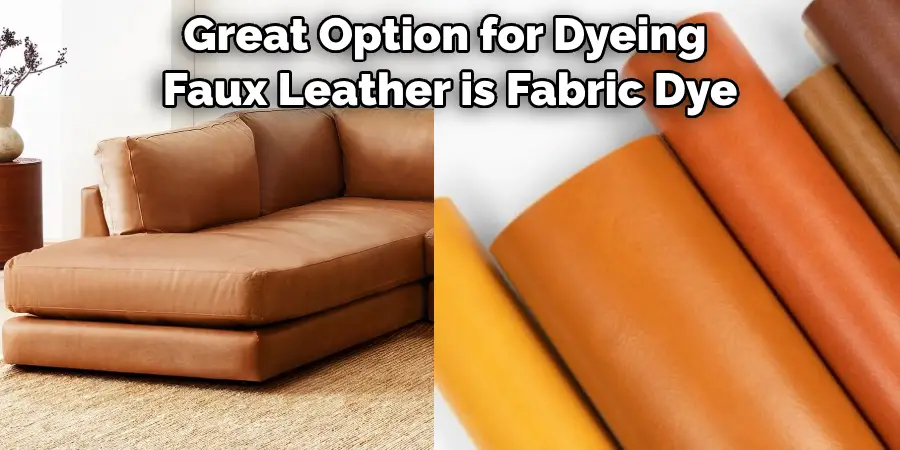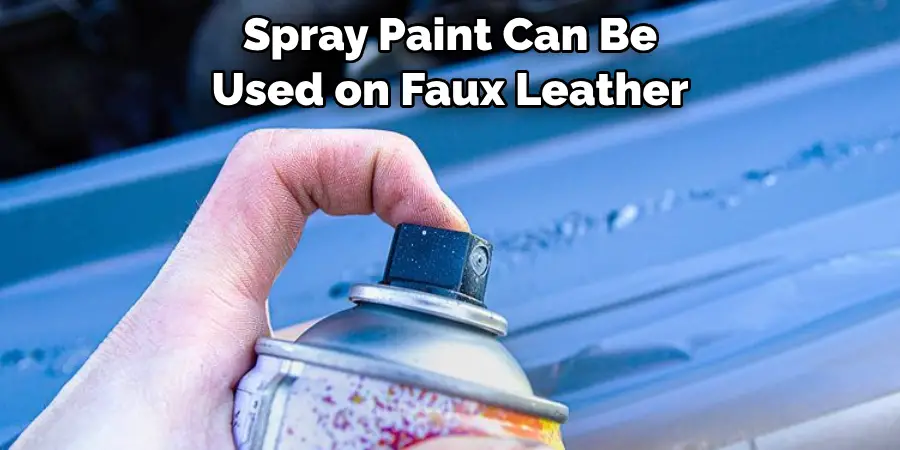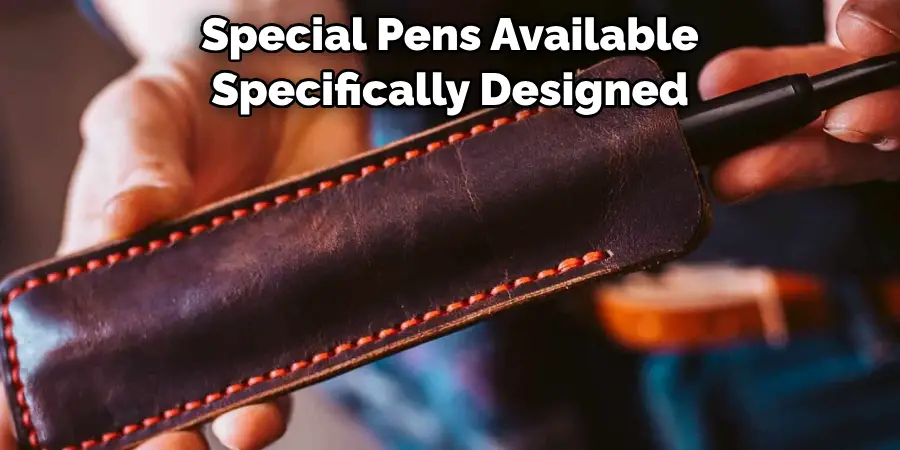Dyeing faux leather is a transformative and creative process that allows individuals to customize and revitalize their synthetic leather items with a burst of color. Whether you’re looking to breathe new life into an old handbag, shoes, or furniture, mastering the art of dyeing faux leather opens up a world of possibilities. Unlike genuine leather, faux leather, also known as synthetic or vegan leather, is typically made from polyurethane or PVC, making it resistant to certain traditional dyeing techniques.

However, with the right materials and approach, achieving vibrant and long-lasting results is entirely feasible. In this guide, we will explore the step-by-step process of how to dye faux leather, from prepping the material to selecting the appropriate dye, ensuring that you can embark on your creative journey with confidence. Unleash your artistic flair and give your faux leather items a personal touch that reflects your unique style.
Purpose of Dyeing Faux Leather
Dyeing faux leather is an affordable and simple option to elevate the look of your furniture, clothing, or other items made from this material. While faux leather is a durable and versatile fabric, it may lack character or customization options in its original state. Dyeing allows for a unique and personalized touch to be added to your faux leather pieces without breaking the bank.

In addition to aesthetic reasons, dyeing faux leather can also be used to restore the color of faded or worn-out items. This is especially useful for furniture and clothing that may have lost its vibrancy over time.
Furthermore, dyeing faux leather can also help in creating a cohesive look when pairing it with other decor or clothing pieces. By choosing a specific color or shade for your faux leather items, you can create a unified and polished aesthetic.
Overall, the purpose of dyeing faux leather is to enhance its appearance and give it a new life. It allows for creativity and personalization in your home or wardrobe while also providing a cost-effective alternative to purchasing new items. So, whether you want to revamp old furniture, update your wardrobe, or add a pop of color to your home, dyeing faux leather is a great solution. So, don’t be afraid to experiment and have fun with this versatile material!
10 Methods How to Dye Faux Leather
1. Acrylic Paint
One of the simplest and most effective ways to dye faux leather is with acrylic paint. This is a great option for those who want to achieve a vibrant, permanent color without too much hassle. All you need is some water-based acrylic paint, a brush, and a cloth or sponge for blending. Simply apply the paint directly to the surface of your faux leather item and use the cloth or sponge to blend it in until you achieve your desired color.
2. Fabric Dye
Another great option for dyeing faux leather is fabric dye. This method will give you more control over the final color as you can mix different colors together to create custom shades. You can also use this method to lighten or darken existing colors of faux leather items. All you need is some fabric dye, water, and a large container for soaking your item in the dye mixture.

3. Leather Dye
If you’re looking for an even more professional finish, then using leather dye may be your best option. This method requires slightly more time and effort than acrylic paint or fabric dye but will give you a beautiful, long-lasting result that will last for years to come. All you need are some specialized leather dyes, a brush or sponge, and some rubbing alcohol (to clean off any excess dye).
4. Alcohol Ink
Alcohol ink is another great way to add vibrant color to your faux leather items without having to worry about fading over time. All you need are some non-permanent alcohol inks (available at most craft stores) and a brush or sponge for applying them directly onto the surface of your item. The beauty of alcohol ink is that it dries quickly so there’s no need to wait around for hours before moving on with your project!
5. Markers
For those who want an easy way to add small details or accents onto their faux leather items, markers are an excellent choice! Permanent markers will work best as they won’t fade over time like non-permanent ones do but either type will work just fine if used correctly (just make sure not to go overboard with them!). All you need are some markers in whatever colors you desire and either a steady hand or stencils if needed!
6. Spray Paint
Spray paint can be used on faux leather items as well although it may not be as durable as other methods such as fabric dye or leather dye so keep that in mind when deciding which route to take with this one! All you need are some spray paints specifically designed for use on faux leather surfaces (available at most craft stores) and something like cardboard or newspaper that can be placed underneath your item while spraying it down!

7. Glitter
For those who want an extra bit of sparkle added onto their faux leather items, then glitter may just be what they’re looking for! It’s best used in moderation, though, so try not to go overboard with this one unless that’s exactly what you’re going for! All you need are some glitters (available at most craft stores) and either glue/adhesive or hairspray, depending on how long-lasting of an effect you want!
8. Stamps/Stencils
Stamps/stencils can be used on faux leather items as well, although they won’t provide quite the same level of detail as markers would so keep that in mind when deciding which route to take with this one! All you need are some stamps/stencils (available at most craft stores) along with either permanent marker ink pads or fabric paints, depending on how long-lasting of an effect you want!
9. Patches/Embellishments
Patches/embellishments can also be used on faux leather items, although they won’t provide quite the same level of detail as stamps/stencils would, so keep that in mind when deciding which route to take with this one! All you need are some patches/embellishments (available at most craft stores), along with either permanent adhesive glue sticks or fabric paints, depending on how long-lasting of an effect you want!
10. Leather Dye Pens
Finally, there are also special pens available specifically designed for dying faux leather surfaces, which makes them ideal if all else fails! These pens come pre-filled with various colors, so all that needs to be done is simply draw whatever design desired onto the surface, then let it dry before wearing/using it again afterward!

Things to Consider When Dying Faux Leather
When it comes to dying faux leather, there are a few things that you should take into consideration. Here are some factors to keep in mind before diving into the process:
Material Type
The type of material used for your faux leather will determine how well the dye will adhere and absorb. Some materials may require additional preparation or specific types of dye, so it’s important to know what type of faux leather you are working with before starting the dying process.
Colorfastness
Colorfastness refers to how well the original color of the faux leather will hold up after being dyed. Some materials may not be able to withstand certain types of dye or excessive exposure to water and may result in fading or discoloration. It’s important to do a colorfastness test on a small area of the material before fully committing to dying.
Prepping the Faux Leather
Before starting the dying process, it is crucial to properly clean and prep the faux leather. This includes removing any dirt, dust, or oils that may interfere with the dye absorbing evenly. You can use a mixture of mild soap and warm water to clean the material, followed by drying it thoroughly.
Choosing the Right Dye
When selecting a dye for faux leather, you need to consider both the type of material and the desired color outcome. Some dyes are specifically designed for synthetic materials while others may work better on natural fibers. It’s important to read labels and instructions carefully before purchasing and applying the dye.
Conclusion
It is possible to dye faux leather with the correct products and a dose of patience in order to achieve the desired look. There are a plethora of options to choose from between different fabrics, dyes, and mediums so you can pick right one for your specific project. The sky is truly the limit when it comes to customizing the leather pieces you own to make them truly unique and designed just for you.
Why not take your creativity one step further and learn how to dye faux leather today? It may seem like a daunting task at first, but with preparation and determination, creating the perfect color for faux leather is definitely achievable. So why not experiment today and unlock your true creative potential with faux leather dyeing? Try it out today and see where it takes you!

